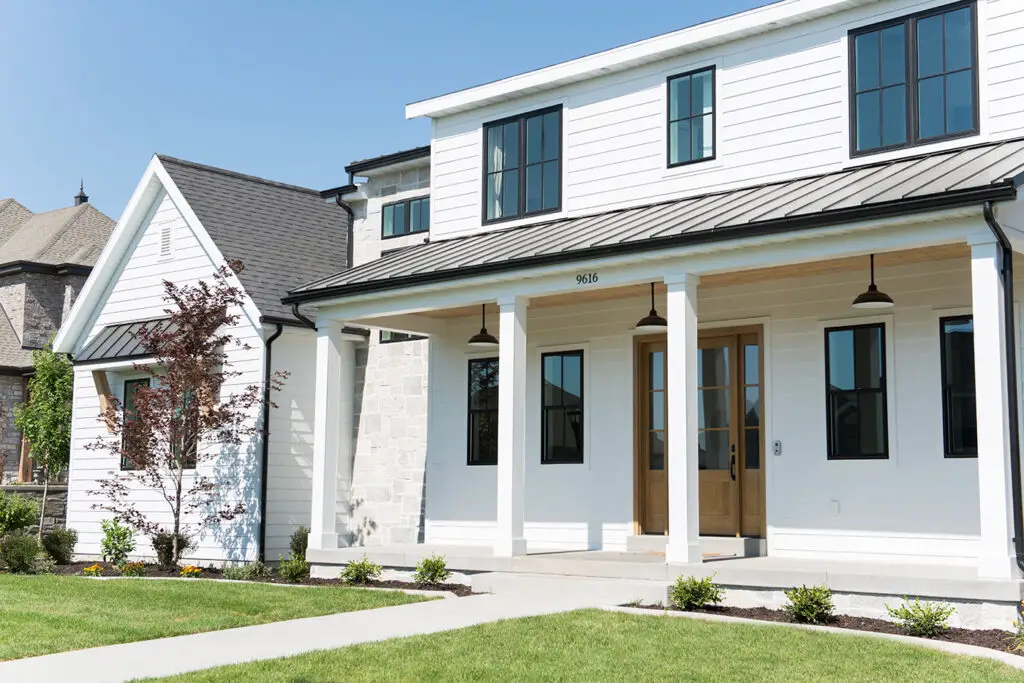Moving to a new home presents an opportunity for a fresh start, but it also requires adjustment and adaptation.
Whether you have moved across the country or to a different country altogether, the process of settling in can be both exciting and challenging.
How do you navigate the unfamiliarity of your new surroundings? How do you build connections and create a sense of belonging? In this article, we will explore effective tips and strategies to help you smoothly adjust to your new home and community after a move.
Preparing for the Move

Before the moving trucks arrive, it’s essential to lay the groundwork for a successful transition. Here are some key steps to take:
1. Researching the new location and community
Take the time to gather information about your new neighborhood. Learn about local amenities, schools, healthcare facilities, and transportation options. Understanding the community’s culture, demographics, and lifestyle can help you adjust more easily.
2. Establishing a moving checklist and timeline
Create a comprehensive checklist to stay organized throughout the moving process. Set realistic deadlines and prioritize tasks such as packing, notifying service providers of your address change, and arranging for utilities at your new home.
3. Organizing and decluttering belongings
Moving is an excellent opportunity to declutter and get rid of items you no longer need. Sort your belongings into categories, donate or sell what you don’t need, and pack efficiently.
4. Packing strategies for an efficient move
Pack strategically to make unpacking easier. Label boxes clearly, pack essential items separately, and consider creating an inventory to keep track of your belongings during the move.
One crucial aspect of a successful move is hiring a reliable moving company. Consider partnering with professionals like Native Van Lines. With their experience and expertise in the moving industry, they can assist you in safely and efficiently transporting your belongings to your new home.
Make sure to consult with them and discuss your specific moving needs to ensure a smooth and stress-free experience.
Arriving at Your New Home

Once you’ve arrived at your new home, it’s time to settle in and make it your own. Here are some tips to help you get started:
1. Unpacking essentials and creating a comfortable living space
Start by unpacking essential items such as bedding, kitchen essentials, and toiletries. Creating a comfortable and functional living space will make the adjustment process smoother.
2. Setting up utilities and services
Ensure that your utilities are set up and functioning correctly. Contact service providers to connect electricity, water, internet, and other essential services.
3. Familiarizing yourself with the neighborhood and nearby amenities
Take a stroll around your new neighborhood to familiarize yourself with local amenities such as grocery stores, parks, restaurants, and public transportation. This will help you feel more connected to your surroundings.
Connecting with Your New Community
Building connections and forging relationships in your new community is crucial for a sense of belonging. Here’s how to get started:
1. Introducing yourself to neighbors and building relationships
Take the initiative to introduce yourself to your neighbors. Knock on doors, strike up conversations, and be open to meeting new people. Small gestures of kindness can go a long way in building lasting relationships.
2. Joining local social and community groups
Look for social and community groups in your area that align with your interests and hobbies. Joining clubs, sports teams, or volunteer organizations can provide opportunities to meet like-minded individuals.
3. Exploring recreational activities and local events
Stay up-to-date with local events, festivals, and activities. Participate in community events to immerse yourself in the local culture and connect with others who share similar interests.
4. Volunteering and getting involved in the community
Consider volunteering for local organizations or charities. Not only will you contribute to your new community, but you will also meet new people and expand your network.
Adjusting to a New Routine

Adapting to a new routine can be challenging, but with some planning and flexibility, you can settle into a comfortable rhythm. Here are some tips:
1. Establishing a daily routine in the new environment
Create a daily schedule that incorporates your work or school commitments, household tasks, and personal activities. Having a routine can provide a sense of stability during the adjustment period.
2. Adapting to new work or school schedules
If your move also involves a change in your work or school environment, take the time to understand the new schedules, procedures, and expectations. Seek support from colleagues or teachers to help you navigate the transition.
3. Finding reliable transportation options
Explore transportation options in your new area, such as public transit, biking, or carpooling. Familiarize yourself with routes and schedules to ensure a smooth commute.
4. Exploring local shopping and dining options
Discover local shops, supermarkets, and restaurants near your new home. Exploring these options will not only help you find essentials but also give you a taste of the local culture and cuisine.
Navigating Local Services and Resources
Settling into your new community also involves accessing essential services and resources. Here’s how to navigate them effectively:
1. Registering with local government agencies
Update your address and register with relevant government agencies, such as the Department of Motor Vehicles (DMV), voter registration, and local tax authorities. Ensure you have the necessary documentation and information to complete these processes.
2. Finding healthcare providers and enrolling in health insurance
Research healthcare providers in your area and establish primary care and specialist relationships. If you have health insurance, review the coverage options and ensure you understand how to access medical services.
3. Discovering nearby grocery stores, banks, and other essential services
Locate nearby grocery stores, banks, pharmacies, and other essential services. Knowing where to find these resources will help you settle in quickly and manage your daily needs.
4. Understanding public transportation and commuting options
Become familiar with the public transportation system in your new area. Research bus or train routes, schedules, and fare information. Understanding the transportation options available to you will make navigating the community easier.
Building a Support Network
Having a support network is invaluable when adjusting to a new home and community. Here’s how to build one:
1. Seeking out professional services
Research and establish relationships with local professionals such as doctors, dentists, lawyers, and accountants. Ask for recommendations from neighbors, colleagues, or online community forums to find trusted professionals in your new area.
2. Connecting with local support groups and associations
Explore local support groups or associations that cater to your interests, hobbies, or personal circumstances. Whether it’s a parent support group, expatriate community, or hobby club, these groups can provide valuable support and friendship.
3. Building friendships and social connections
Be proactive in reaching out and building friendships with people you meet in your new community. Attend social events, join social media groups, and engage in activities that allow you to meet new people and create meaningful connections.
Exploring the Local Culture and History

Immerse yourself in the rich culture and history of your new community. Here are some ways to do so:
1. Visiting museums, historical sites, and landmarks
Take the time to visit local museums, historical sites, and landmarks. These not only provide valuable insights into the local culture and history but also offer opportunities to engage with your new community.
2. Attending local festivals and cultural events
Check the local events calendar for festivals, fairs, and cultural events happening in your area. Attending these events allows you to experience the vibrant traditions and celebrations of your new community.
3. Trying regional cuisine and exploring local traditions
Sample the local cuisine by dining at restaurants that serve regional specialties. Additionally, explore local markets, craft fairs, or art exhibitions to immerse yourself in the traditions and artistic expressions of your new home.
4. Engaging with local arts, music, and theater scenes
Attend local theater performances, concerts, or art exhibitions to support local artists and enjoy the vibrant cultural scene. This will deepen your understanding of the community and provide opportunities to connect with fellow art enthusiasts.
Maintaining Mental and Emotional Well-being
Moving to a new home can be emotionally challenging. Here’s how to prioritize your mental and emotional well-being:
1. Dealing with homesickness and feelings of nostalgia
It’s natural to experience homesickness and nostalgia when adjusting to a new home. Allow yourself to feel these emotions and find healthy ways to cope, such as staying connected with loved ones or engaging in activities that bring you comfort.
2. Finding support for mental health needs
If you find yourself struggling with the transition, don’t hesitate to seek professional support. Research mental health resources in your new area, such as therapists or counselors, who can help you navigate this period of adjustment.
3. Practicing self-care and stress management techniques
Prioritize self-care by engaging in activities that promote relaxation and well-being. Whether it’s exercising, practicing mindfulness, or pursuing hobbies, carving out time for self-care will contribute to your overall adjustment and happiness.
Engaging with Schools and Educational Institutions
If you have children, adjusting to a new home involves navigating the education system. Here’s how to ensure a smooth transition:
1. Enrolling children in schools or finding suitable educational options
Research schools in your new area and understand the enrollment process. Gather necessary documentation, schedule school visits, and involve your children in the decision-making process to help them feel more comfortable with the transition.
2. Getting involved in parent-teacher associations and school activities
Joining parent-teacher associations and attending school activities can provide opportunities to meet other parents and establish connections within the school community. Active engagement fosters a sense of belonging for both you and your children.
3. Connecting with other parents and families in the school community
Initiate conversations with other parents at school drop-offs or pick-ups, attend parent-teacher conferences, or participate in school events. Forming connections with other families can create a support system and enhance your children’s social experiences.
Embracing New Hobbies and Interests
Adjusting to a new home is an opportunity to explore new hobbies and interests. Here’s how to embrace them:
1. Joining local sports teams or fitness groups
Discover sports teams, fitness classes, or recreational groups in your new community. Participating in physical activities not only promotes well-being but also allows you to meet people with similar interests.
2. Exploring outdoor activities and nature trails
Take advantage of any nearby parks, nature trails, or outdoor recreational areas. Engaging with nature can be a source of relaxation and provide opportunities to connect with fellow outdoor enthusiasts.
3. Taking up new hobbies and joining clubs or classes
Use this transition period to explore new hobbies or interests. Join local clubs or classes that align with your passions, whether it’s painting, cooking, dancing, or photography. This can lead to new friendships and a sense of fulfillment in your new community.
Overcoming Language and Cultural Barriers

Adjusting to a new home may involve overcoming language and cultural barriers. Here’s how to navigate them:
1. Learning the local language or dialect
Consider taking language classes or using language-learning apps to familiarize yourself with the local language or dialect. Learning key phrases and greetings can go a long way in building connections and integrating into the community.
2. Understanding cultural norms and customs
Educate yourself about the cultural norms and customs of your new community. Respectful observance of local traditions and etiquette can help you build positive relationships and avoid misunderstandings.
3. Seeking language classes or conversation partners
If language barriers persist, explore local language classes or seek conversation partners who can help you practice and improve your language skills. Many communities offer language exchange programs or conversation groups.
4. Utilizing translation services and cultural integration programs
Take advantage of translation services, online resources, and cultural integration programs available in your new community. These resources can provide guidance, support, and practical assistance in navigating language and cultural challenges.
Managing Finances in a New Environment
Managing your finances effectively is crucial when adjusting to a new home. Here’s how to stay on top of your financial responsibilities:
1. Setting up a new budget and financial plan
Review your financial situation and adjust your budget to accommodate any changes in expenses or income. Take into account the cost of living in your new area and ensure your budget aligns with your financial goals.
2. Transferring bank accounts and updating addresses
Contact your bank to transfer your accounts to a branch near your new home. Update your address with financial institutions, credit card companies, and any other relevant entities to ensure smooth communication and transactions.
3. Researching local tax regulations and obligations
Familiarize yourself with local tax regulations and obligations specific to your new area. Consult with a tax professional or utilize online resources to understand your responsibilities and deadlines.
Creating a Sense of Home

Making your new house feel like a home is essential for a smooth transition. Here’s how to create a sense of belonging:
1. Personalizing your living space with familiar items
Bring cherished items or decorations from your previous home to add a sense of familiarity to your new living space. Display photographs, artwork, or sentimental objects that evoke positive memories.
2. Establishing traditions and rituals in the new home
Create new traditions or maintain existing ones to establish a sense of continuity and comfort. This could include weekly family movie nights, Sunday brunches, or holiday celebrations that reflect your family’s values and traditions.
3. Making the most of your new surroundings and amenities
Explore your new surroundings and take advantage of the amenities and attractions available to you. Whether it’s nearby parks, community centers, or cultural institutions, discovering the unique features of your new neighborhood can enhance your sense of home.
Handling Challenges and Obstacles
Despite your best efforts, challenges may arise during the adjustment process. Here’s how to overcome them:
1. Troubleshooting common issues in a new home
Be prepared to encounter minor issues or repairs in your new home. Familiarize yourself with the home’s systems and keep a list of trusted contractors or handymen who can assist with any necessary repairs or maintenance.
2. Dealing with relocation stress and unexpected difficulties
Relocation stress is common during a move. Be patient with yourself and understand that it’s natural to feel overwhelmed or anxious. Seek support from friends, family, or local resources to help you navigate any unexpected difficulties that may arise.
3. Seeking help and support when needed
Don’t hesitate to reach out for help when you need it. Whether it’s asking a neighbor for advice, seeking guidance from community resources, or connecting with support groups, knowing when to seek assistance is a sign of strength and adaptability.
FAQs

How long does it usually take to adjust to a new home and community?
Adjustment periods vary for each individual. It can take anywhere from a few weeks to several months to feel fully settled in a new home and community. Be patient with yourself and allow time for the adjustment process.
What are some strategies for meeting new people in a new community?
Meeting new people can be as simple as introducing yourself to neighbors, joining local social and community groups, or attending events and activities in your area. Taking part in shared interests or hobbies is an effective way to connect with like-minded individuals.
How can I find local services and resources in my new area?
Researching online directories, community websites, or asking for recommendations from neighbors are great ways to find local services and resources. Local government websites and community centers often provide valuable information on services available in the area.
What are some common challenges faced when moving to a new place?
Common challenges include adjusting to a new environment, building new relationships, understanding local customs and cultural differences, and navigating unfamiliar systems and processes. It’s important to approach these challenges with an open mind and a willingness to learn.
How can I help my children adjust to a new school and make new friends?
To help your children adjust to a new school, involve them in the decision-making process, maintain open communication with teachers, and encourage their participation in extracurricular activities. Encouraging them to join school clubs or sports teams can provide opportunities to make new friends who share similar interests.
Finding Your Place and Thriving in Your New Home
Adjusting to a new home and community requires time, effort, and a positive mindset. By following these tips and strategies, you can navigate the challenges, build connections, and create a sense of belonging. Remember, settling in is a journey, and each step you take brings you closer to finding your place and thriving in your new home.
Thanks to nativevanlines.com for consulting.

Leave a Reply